|
Gowanus Canal is 100-foot wide, 1.8-mile-long body of water in the New York City borough of Brooklyn, Kings County, New York.
Conclusion - Restrictions: Migration limits for the following substances: Formaldehyde
Formaldehyde 0.42 mg/kg of diaper
PCDD/Fs/DL-PCBs
Sum of the quantified PCDD/Fs
and DL-PCB in TEQ
0.0017 ngTEQ/kg of diaper
Sum of the quantified PCBs 112 ng/kg of diaper
PAHs
The sum for the detected or
quantified PAH in TEQ
"A Long-Term Study on the Content of Polycyclic Aromatic Hydrocarbons in Rubber from End-of-Life Tires of Passenger Cars and
Trucks" - Materials (Basel, Switzerland) (2022)
If it is such an emergency, and it is, why wait 5 years????
"The new regulation, which requires public water systems to reduce contamination by 2029, sets limits for five individual
PFAS chemicals and for mixtures of at least two of three of these and one more. .... For decades, the American people have
been exposed to incredibly toxic forever chemicals known as PFAS with no protection from their government. 'Those chemicals
now contaminate virtually all Americans from birth, in fact before birth.'"
"PAHs are present in tobacco smoke, smoke from wood fires, creosote-treated wood products, cereals, grains, flour, bread,
vegetables, fruits, meat, processed or pickled foods, and contaminated cow’s milk or human breast milk. Food grown in
contaminated soil or air may also contain PAHs. Cooking meat or other food at high temperatures, which happens during grilling
or charring, increases the amount of PAHs in the food.
The primary sources of exposure to PAHs for most of the U.S. population are inhalation of the compounds in tobacco
smoke, wood smoke, and ambient air, and consumption of PAHs in foods. For some people, the primary exposure to PAHs occurs
in the workplace. PAHs have been found in coal tar production plants, coking plants, bitumen and asphalt production plants,
coal-gasification sites, smoke houses, aluminum production plants, coal tarring facilities, and municipal trash incinerators.
Workers may be exposed to PAHs by inhaling engine exhaust and by using products that contain PAHs in a variety of industries
such as mining, oil refining, metalworking, chemical production, transportation, and the electrical industry. PAHs have also
been found in other facilities where petroleum, petroleum products, or coal are used or where wood, cellulose, corn, or oil
are burned. People living near waste sites containing PAHs may be exposed through contact with contaminated air, water, and
soil.
"Polycyclic aromatic hydrocarbons (PAHs) are one such family of ubiquitous environmental toxicants. These pollutants
enter the human body through consumption of contaminated food, drinking water, inhalation of cigarette smoke, automobile exhausts,
and contaminated air from occupational settings. Among these pathways, dietary intake of PAHs constitutes a major source of
exposure in humans. Although many reviews and books on PAHs and their ability to cause toxicity and breast or lung cancer
have been published, aspects on contribution of diet, smoking and other factors towards development of digestive tract cancers
and strategies to assess risk from exposure to PAHs have received much less attention."
"Firefighters have increased cancer incidence and mortality rates compared to the general population, and are
exposed to multiple products of combustion including known and suspected carcinogens. .... all fire service personnel
at a fire scene are at risk for exposure to products of combustion. Characteristics of the fire, firefighter activities
at the scene and self-reported exposures were all significantly associated with urinary sum of all PAH-OHs measurements.
Specifically, residential fires, interior responses including duration of interior response, smoke odor on skin, and lack
of recent laundering or changing of hoods were significantly associated with increased post-fire urinary sum of PAH-OHs. Fire
departments should continue to implement measures to reduce dermal and respiratory exposures."
"The term 'firefighter' and “cancer” have become so intertwined in the past decade that they are now nearly inseparable."
"Given the volume of PFAS used in consumer products, electronics, building materials, structures, and vehicles it is
feasible that these chemicals can be released during combustion and lead to additional exposures to firefighters responding
to the incident. These exposures may include respiratory hazards, direct dermal contact, or though settling on and contaminating
the turnout gear, as has been shown with multiple other fireground contaminants and carcinogens such as polycyclic aromatic
hydrocarbons. Therefore, a general recommendation is not to wear turnout gear where it is not needed (i.e., medical call,
personal use, certain types of training, etc.). Also, decontamination should be the done carefully after every fire call to
ensure fire stations are not contaminated by the fire scene carcinogens."
"Testicular cancer is one of the key cancers triggered upon exposure to PFAS, and this study is the first to shed light
on the mechanisms. As we progress, I am sure we will have more clarity on initiation and metastasis mechanisms." - Joseph
Irudayaraj, CCIL Associate Director for Shared Resources.
One of the primary environmental risks associated with microplastics is that they are ubiquitous and bioavailable for
injection by marine organisms, soil organisms and plant growing on microplastic polluted soils. such as seabirds, fish, sandhoppers, sea turtle, crustacean and mussel, soil invertebrates
such as collembolan, oligochaeta (e.g. earthworms) and isopods and in plants such as wheat plants. In addition,
their presence in table salts, potable water, and human excreta has also been reported.
It is conclusive since the research and writing of this article, that human reproduction is directly affected by microplastics
and PAHS; both testicular and through gestation process in a female.
"A TOXIC COCKTAIL OF LEAD, COPPER, ZINC, MERCURY, PAHS (POLYCYCLIC AROMATIC HYDROCARBONS) AND PCBS (POLYCHLORINATED
BIPHENYLS) ARE
IN THE HARBOR’S SEDIMENTS."
"Future generations will not forgive us for having deliberately spoiled their last opportunity. Let us stop
this delayed-action genocide! Let us cease thinking only of ourselves and reasoning only in the short term.... This
is our responsibility; as we hold in our hands the future of tomorrow's exacting generations." - Jacques Cousteau
~
THE FOREVER CHEMICAL FAMILIES
PFAS <<&>> PAHS
The PFAS Family, and Even Worse - The PAHS Family
Reflection of your life too. Please Watch it to completion.
PERFLUOROALKYL SUBSTANCES (PFAS) & POLYFLUOROALKYL SUBSTANCES (PFAS)
PFAS are a group of more than 12,000 synthetic chemicals
This is the most comprehensive EPA list. Current lists only are focused on "most harmful" and only contain 9 -
72 chemicals.
PFAS are not only allowed, but endorsed by the United States Food and Drug Administration.
Seek to reveal: learn why they are now part of you, in you, as in all animals, all for having a - convenient, "easy" life.
"Pogo coughin' bad from diesel fumes
Johnny tell the chaplain - go and polish his tombs
Lying on the waste-ground with a blanket on his face ~ Indicating that he's left the human race....
God you know it's hard to keep the fighting clean: ~ clean clean ~ clean clean ~ clean clean ~ clean clean"
There are 15,000 chemicals in the PHAS Family
Yo nací un día
que Dios estuvo enfermo.
— César Vallejo, “Espergesia”
"There's no way to talk or write about illness; none that is good enough, anyway."
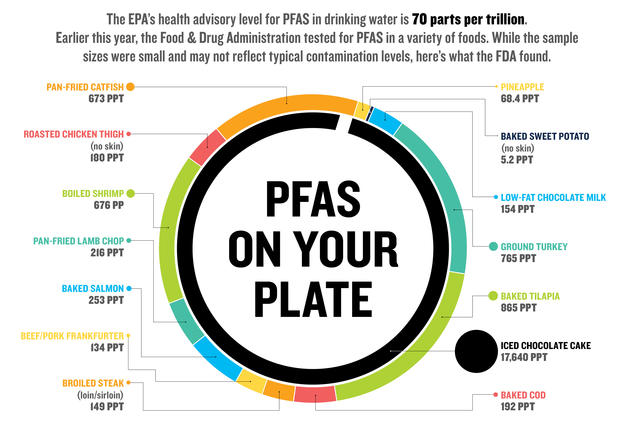
|
| UNITED STATES OF AMERICA FOOD AND DRUG ADMINISTRATION (2019) |
| SOME MAIN PRODUCTS MADE WITH PFAS |
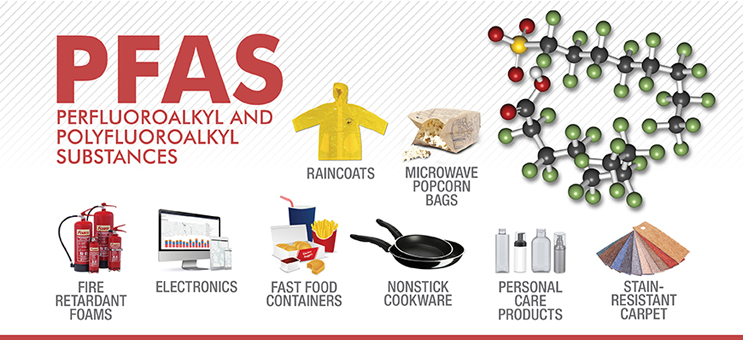
|
| "The Microplastics And PFAS Connection" - WATER ONLINE (2021) |
PFAS CENTRAL - A Project of Green Science Policy
Per- and Polyfluoroalkyl Substances (PFAS) - Environmental Protection Agency (EPA)
Military: U.S.A. Air Force - Airport Pollutes Groundwater - All Drinking Water
"What Is Really In Your Bottled Water?" - Consumer Reports (2020)
"Why PFAS are so Impervious, and Who is Most at Risk From the Forever Chemicals" - PBS News Hour (2022)
| REGARDING: PER & POLYFLUOROAKYL SUBSTANCES (PFAS) |
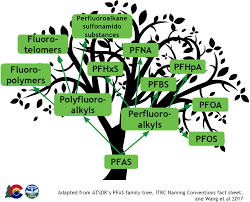
|
| COLORADO SPRINGS UTILITIES - WATERSHED PLANNING |
Click Picture For In-Depth Report
About Community-Owned Colorado Springs Utilities
How New & Recycled Toilet Paper Is Made - Free Documentary Shorts
"Evidence of PFAS in toilet paper [Yes, Toilet Paper!]: Testing Finds Fluorine - an Indicator of PFAS - in Four Brands of
Toilet Paper. However, the Levels Indicate the Chemicals are Unlikely Added on Purpose." - Environmental Health News (2022)
"Your Toilet Paper is Full of Forever Chemicals: Researchers found a High Level of PFAS in Wastewater - and a Significant
Portion of That was Coming From Toilet Paper." - Fast Company (2023)
"A new global study finds harmful PFAS chemicals in toilet paper and sewage. Here's what to know."
"There is also evidence the compounds are linked to low birth weight, kidney cancer and a slew of other health issues."
Understanding Cancer Chapter The Biology and Natural History of Cancer" - Understanding Cancer: Chapter - The Biology and
Natural History of Cancer" - Understanding Cancer (2023)
"PFAS: The Secret Toxins in Your Body" - DW Planet A (2021)
"The per-and polyfluoroalkyl substances (PFAS) are a group of chemicals used to make fluoropolymer coatings and products that
resist heat, oil, stains, grease, and water. Fluoropolymer coatings can be in a variety of products. These include clothing,
furniture, adhesives, food packaging, heat-resistant non-stick cooking surfaces, and the insulation of electrical wire. Many
PFAS, including perfluorooctane sulfonic acid (PFOS) and perfluorooctanoic acid (PFOA), are a concern because they:
* Do not break down in the environment,
* Can move through soils and contaminate drinking water sources,
* Build up (bioaccumulate) in fish and wildlife.
PFAS are found in rivers and lakes and in many types of animals on land and in the water."
"PFAS and Protecting Your Health" - Centers for Disease Control and Prevention (CDC) (2019)
"PFAS: The Science of Dark Waters" - Our Eden
"DuPont Poisoning The World" - BBC Documentary
"What We Know About Toxic 'Forever Chemicals' and How to Reduce our Exposure - "PBS News Hour' (March 26th, 2023)
The United States continues to not only allow, but supports the usage of PFAS:
"Authorized Uses of PFAS in Food Contact Applications" - U.S Food & Drug Administration (2022)
"PFASs in Popcorn Bags and Pizza Boxes" - Toxic-Free Future (2018)
"PFAS: Per- and Polyfluoroalkyl Substances" - U.S. Department of Energy
"PFAS" - "Last Week Tonight with John Oliver" (2021)
INVESTIGATION: "PFAS are toxic and virtually indestructible chemicals used in a wide range of objects, from anti-stick pans
to medical implants. Le Monde has uncovered the existence of thousands of contaminated sites."
AT LEAST 45% OF UNITED STATES OF AMERICA'S TAP WATER HAS ONE OR MORE TYPES OF PER- AND POLYFLORINATED ALKYL SUBSTANCES.
- United State Geological Survey (USGS) (2023)
"At least 45% of the nation’s tap water is estimated to have one or more types of the chemicals known as per- and polyfluorinated
alkyl substances, or PFAS, according to a new study by the U.S. Geological Survey. There are more than 12,000 types of PFAS,
not all of which can be detected with current tests; the USGS study tested for the presence of 32 types."
[This article does not include Polycyclic Aromatic Hydrocarbons (PAHS) that is also found in water.]
"There are more than 12,000 types of PFAS, not all of which can be detected with current tests; the USGS study tested
for the presence of 32 types."
"'The EPA designation provides additional clarity, but many challenges remain to balance cleanup efforts for PFAS and legacy
contaminants for the best environmental outcome,' said NGWA Director of Science and Technology Bill Alley, Ph.D.
Under the rule, entities are required to immediately report releases of PFOA and PFOS that meet or exceed the reportable quantity
of one pound within a 24-hour period to the National Response Center, State, Tribal, and local emergency responders. The designation
of PFOA and PFOS as hazardous substances under CERCLA enables the agency to use one of its strongest enforcement tools to
compel polluters to pay for or conduct investigations and cleanup rather than taxpayers. Designation is especially important
as delay in addressing contamination allows PFOA and PFOS more time to migrate in water and soil, worsening existing contamination.
The final rule also means that federal entities that transfer or sell their property must provide notice about the storage,
release, or disposal of PFOA or PFOS on the property and guarantee that contamination has been cleaned up or, if needed, that
additional cleanup will occur in the future. It will also lead the Department of Transportation to list and regulate these
substances as hazardous materials under the Hazardous Materials Transportation Act."
Some Cuss Language
"'Forever Chemicals' The Hidden Threat From the Toxic PFAS On Your Shelf: PFAS are Used in Paints, Food Packaging, and Even
Cosmetics. We Know They Are in Our Water, Air, Soil, and Bodies - But Less About How They Will Affect Us" - The Guardian (2021)
"Thermoplastics are plastic materials which change shape when they are heated. Common plastics used in pipe manufacturing
include Polyvinyl Chloride (PVC), Polyethylene (PE or HDPE for High Density PE), Acrylonitrile-butadiene-styrene (ABS), and
Polybutylene (PB). HDPE is commonly used with pipe bursting. PVC is strong, lightweight, and somewhat flexible. PVC pipe is
the most widely used plastic pipe material. Other plastic pipes or composites with plastics and other materials may be more
rigid."
"Presently, the company's use of PFAS is limited. We have systems, processes and protocols in place ensuring that
PFAS is used safely, controlled to the highest standards and minimized. Additionally, where PFAS is used, we are actively
working with our customers and academia to pursue alternatives where feasible.
DuPont does not make or use PFOA or PFOS in the development or manufacture of our products. Further, DuPont never manufactured
or sold firefighting foam."
DuPont Company Films and Commercials - Hagley Archives
"Du Pont... First in Fibers For Tire Cord"" - Du Pont
PIPES
"How it's made: PVC Pipe Making Factory, Pervasive Agricultural Uses..." - Unbox Engineering (2021)
Establishes PVC Pipes are constructed of both PFAS and PAHS. PVC pipes are used as copper piping substitutes for carrying
water to every faucet and in larger forms, sewer pipes in homes buildings, as well as even larger pipes leading from reservoirs.
"Dr. Andrew Whelton, an assistant professor at the Purdue University Lyles School of Civil Engineering and Division of Environmental
and Ecological Engineering, has been researching the safety of plastic pipes since 2014. ....
In one of the first U.S. studies to look at numerous brands of PEX pipes and their effects on water quality, Whelton's research
team tested six brands produced by different manufacturing methods. They found that each type caused odors exceeding the Environmental
Protection Agency's guidelines, and leached chemicals such as toluene, which is neurotoxic, and MTBE, a carcinogen that's
been banned as a gasoline additive, but is a byproduct produced during PEX pipe manufacture. Next, researchers tested water
in homes where plastic drinking water pipes had been installed, comparing different brands and types of PEX, PVC, polypropylene
and high-density polyethylene. They found that PEX pipes released more odors and leached more chemicals compared to polypropylene.
To date, more than 150 contaminants have been found in water that flowed through PEX pipes in these and other studies. Since
each of the more than 70 brands of PEX pipes can leach different chemicals, and there are no enforceable federal regulations,
it's difficult for consumers to weigh the health risks.
'We have seen significant amounts of chemicals leaching from new PEX pipes across brands and differences even within the same
brand of pipe purchased from different stores,' Whelton told EWG. He said the pipe materials are not tested once they are
installed to see the whole range of chemicals that could leach into water and that most of the substances released into the
water have not been identified. Even if the chemicals that leach are not known to be toxic, they could fuel the growth of
bacteria in the pipes or cause bad odors, he added.
Whelton said homeowners who have already installed PEX pipes should flush them to reduce the amount of chemicals that could
leach into water – the longer the better. In some pipes, researchers have seen significant leaching even after 30 days
of use."
UNDERSTANDING "NON-STICK"
"What's Cooking?: PFAS and Other Chemical Hazards in Nonstick Cooking and Baking Pans (2020)
"Researchers also found that product claims--and omissions--on some packaging could lead buyers to purchase PTFE-coated pans
when they think they’re buying an alternative. Tested pans labeled “PTFE-free” were indeed free of PFAS.
But other label claims, such as “PFOA-free” did not mean PFAS-free. In fact, most pans in this study labeled “PFOA-free”
were coated with PTFE without disclosing."
"The California suit focuses on seven PFAS chemicals, including PFOA and PFOS, which the complaint alleges have been detected
in the blood of 99% of state residents tested—in addition to lakes and rivers, drinking water sources, fish and wildlife."
"How Chemical Companies Avoid Paying for Pollution: DuPont Factories Pumped Dangerous Substances into the Environment. The
Company and Its Offspring Have Gone to Great Lengths to Dodge Responsibility." - The New York Times (2021)
COOKWARE TO USE: So, what cookware are completely safe? Cast iron, Stainless Steel, Carbon Steel, and Glass.
"Lead Toxicity From Glazed Ceramic Cookware" - Canadian Medical Association Journal | Journal De L'Association Medicale Canadenne
(2016)
Frederick and Silver Spring Military Sites Have 2 Each: Highest PFAS Levels
"Permeation and Leaching" - Office of Ground Water and Drinking Water Distribution System Issue Paper - Environmental Protection
Agency (EPA)
Although Methyl tertiary butyl ether (MTBE) in gasoline sold in the U.S. has nearly ceased in recent years, it continues to
reach soil and ground water, thereby contaminating - with many EPA's federal underground storage tank (UST) themselves not
regulated. Challenges to get states "compliant" with federal UST regulations.
"Is Silicone Safe? Everything You Need to Know About This All-Purpose Material" - Million Marker
"Moving Past PFAS - Toxic Convenience: The Hidden Costs of Forever Chemicals in Stain- and Water - Resistant Products" - Toxic-Free
Future
Executive Summary - Toxic Convenience: The Hidden Costs of Forever Chemicals in Stain and Water-Resistant Products" - Toxic-Free
Future
| PFAS FOUND IN TOILET PAPER |
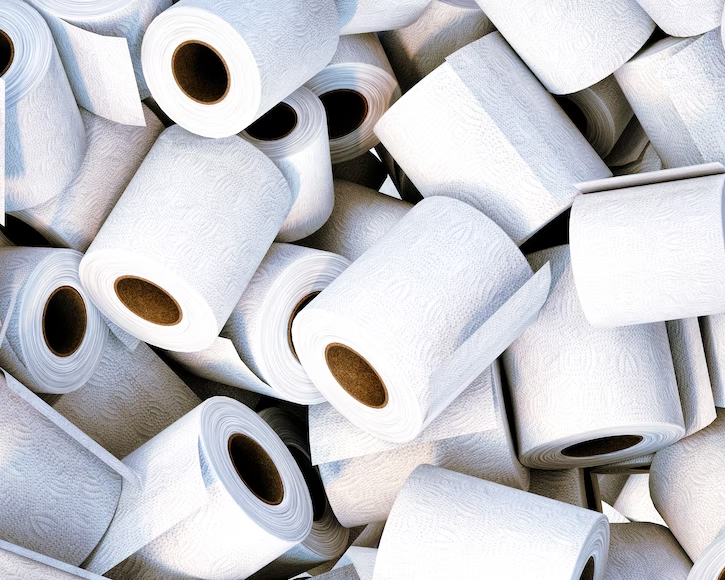
|
| PFAS FOUND INSIDE TOILET PAPER FIBERS - Environmental Health News (2022) |
| PFAS FOUND IN TOILET PAPER |

|
| PFAS FOUND INSIDE TOILET PAPER FIBERS - Environmental Health News (2022) |
| PFAS FOUND IN TOILET PAPER |

|
| PFAS FOUND INSIDE TOILET PAPER FIBERS - Environmental Health News (2022) |
| PFAS FOUND IN TOILET PAPER |

|
| PFAS FOUND INSIDE TOILET PAPER FIBERS - Environmental Health News (2022) |
| PFAS FOUND IN TOILET PAPER |

|
| PFAS FOUND INSIDE TOILET PAPER FIBERS - Environmental Health News (2022) |
| PFAS FOUND IN TOILET PAPER |

|
| PFAS FOUND INSIDE TOILET PAPER FIBERS - Environmental Health News (2022) |
| PFAS FOUND IN TOILET PAPER |

|
| PFAS FOUND INSIDE TOILET PAPER FIBERS - Environmental Health News (2022) |
| PFAS FOUND IN TOILET PAPER |

|
| PFAS FOUND INSIDE TOILET PAPER FIBERS - Environmental Health News (2022) |
............
Polycyclic Aromatic Hydrocarbons (PAHS) are also found in toilet paper
LAWSUIT: THE PEOPLE OF THE STATE OF CALIFORNIA, EX REL. ROB BONTA, ATTORNEY GENERAL OF CALIFORNIA, VERSUS COLLECTIVE DEFENDANTS:
3M Company; AGC Chemicals Americas, Inc.; Archroma, U.S., Inc.; Arkema, Inc.; Buckeye Fire Equipment Company; Carrier Global
Corporation; Chemguard, Inc.; the Chemours Company; the Chemours Company FC, LLC; Clariant Corporation; Corteva, Inc.; DuPont
De Nemours, Inc.; Dynax Corporation; E.I. Du Pont De Nemours and Company; Kidde-Fenwal, Inc.; National Foam, Inc.; Tyco Fire
Products, L.P.; UTC Fire & Security Americas Corporation, Inc.; and Does 1 through 100 (2022)
"Circumpolar Study of Perfluoroalkyl Contaminants in Polar Bears (Ursus maritimus)" - Environmental Science & Technology (2005)
"Perfluoroalkyl Substances in Polar Bear Mother-Cub Pairs: A Comparative Study Based on Plasma Levels From 1998 and 2008"
- (2012)
"Polar Bear Cubs at High Risk from Toxic Industrial Chemicals, Despite Bans: Levels in Young Animals Elevated to 1,000 Times
the Acceptable Amount in People" - Scientific American (2017)
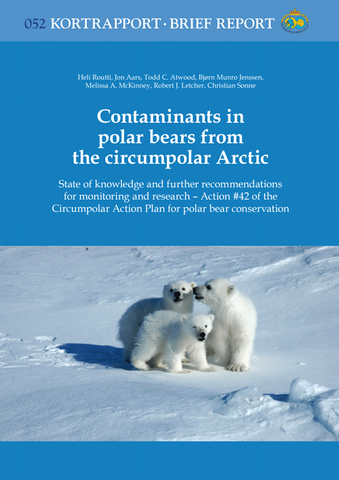
|
| 2019. |

|
| 19 ARTIC SUBPOPULATIONS OF POLAR BEARS ~ San Diego Zoo Wildlife Alliance Library |

|
| Polar Bear Range States |

|
| WITHOUT YOU, THERE IS NO THEM ~ POLAR BEARS |
| BARENTS SEA POLLUTANT LEVELS OF PELAGIC & COASTAL |
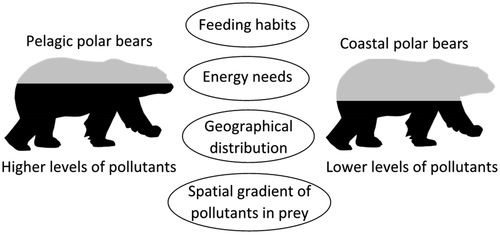
|
| PELAGIC & COASTAL POLAR BEARS - ENVIRONMENTAL SCIENCE & TECHNOLOGY |
..................................................................................................................................................................................................................................................................................................................................................................................................................................................................................................................................
⇶
THE ULTIMATE CARCINOGENIC: PAHS
POLYCYCLIC AROMATIC HYDROCARBONS
"Earth Song" - Michael Jackson
Most Common PAHS:
Acenaphthene Dibenzo(a,h)anthracene
Anthracene Fluoranthene
Benzo(a)anthracene Fluorene
Benzo(a)pyrene Indo(1,2,3-cd)pyrene
Benzo(b)fluorantheneNaphthalene
Benzo(k)fluoranthenePhenanthrene
Chrysene Pyrene
Triclocarban (TCC)
Triclosan (TCS)
THE POLYCYCLIC AROMATIC HYDROCARBON CHEMICAL LIST - National Research Council (US) Committee on Pyrene and Selected Analogues
Pictures have corresponding article/resource:
| POLYCYCLIC AROMATIC HYDROCARBON (PAH) COMPOUNDS |
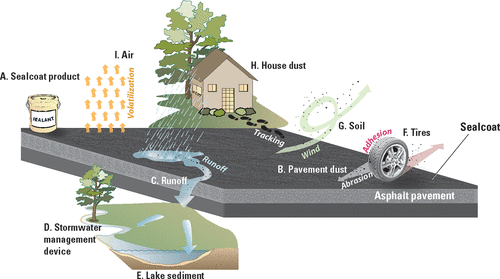
|
| PRODUCTS: COAL TAR-PITCH KNOWN HUMAN CARCINOGEN CONTAINING 200 PAH COMPOUNDS |
| WHAT IS THIS CHALK-LOVING GIRL BEING EXPOSED TO? |

|
| AQUALUNG WATERSHED ASSOCIATION |
| PAH FOSSIL FUEL AIR POLLUTANTS MULTIPLY IN SUN |
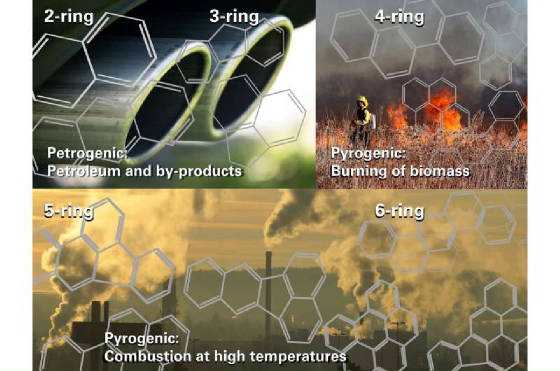
|
| UNIVERSITY OF JOHANNESBURG (2021) |
| BROWN BULLHEAD FISH ~ ANACOSTIA RIVER |

|
| SKIN TUMOR - CANCER BLADENSBURG, MARYLAND |
| MARYLAND SOFT SHELL CLAM ~ WITH CANCER |
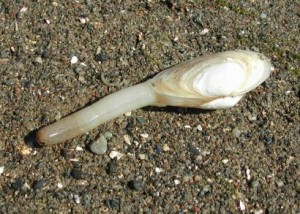
|
| CANADIAN WILDLIFE HEALTH COOPERATIVE ~ Mary Jo Adams |
| EFFECTS ON FISH PAHS AND NAPTHENTIC ACID EXPOSURES |
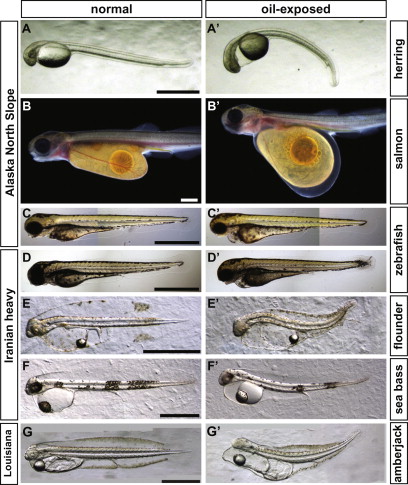
|
| FISH PHYSIOLOGY (2013) [MASSIVE VERTEBRATE SHAPE CHANGE] |
| HARBOUR SEAL (Phoca vitulina geronimensis) |

|
| GIANT CELL SARCOMA -> FORELIMB AMPUTATION |
| Coal-Tar-Based Pavement Sealcoat and PAHs: |
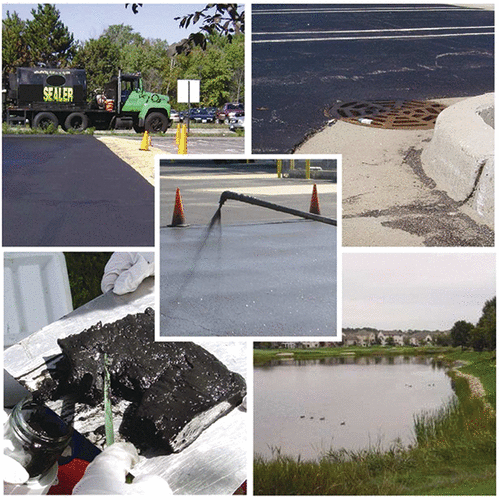
|
| Implications for Environment, Human Health,& Stormwater Management - Environment, Sci, & Tech (2012) |
..................................................................................................................................................................................................................................................................................................................................................................................................................................................................................................................................
POLYCYCLIC AROMATIC HYDROCARBONS STARVE FISH TO SLOW DEATH
THROUGH TUMORS DEVELOPED ESPECIALLY ON THEIR LIPS, SKIN, AND THROATS
Click on pictures for articles
| BROWN BULLHEAD TROUT (Ameiurus Nebulosus) |
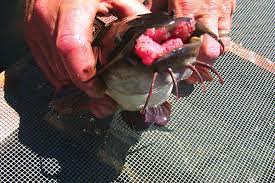
|
| PAH-caused Cancer Tumors | ASHUMET POND, CAPE COD, MASSACHUSETTS |
| SMALLMOUTH BASS ~ SUSQUEHANNA RIVER - TUMOR CANCER |
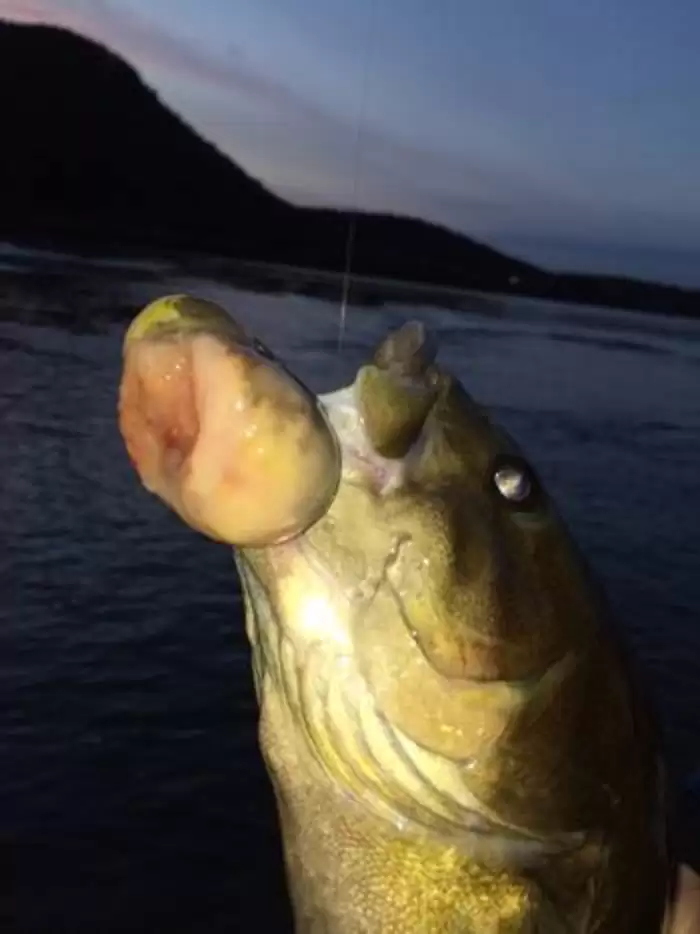
|
| RIVER MIDDLE SECTION NEAR DUNCANNON IN DAUPHIN COUNTY |
| BLUE CATFISH - BRAIN TUMOR |
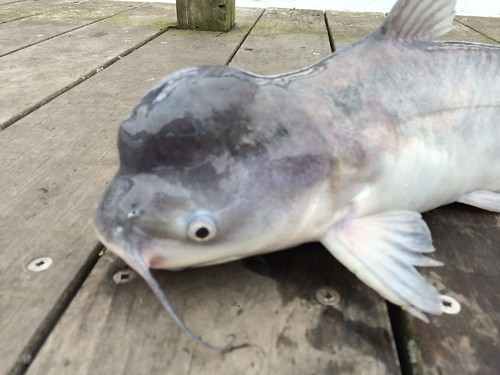
|
| SUSQUEHANNA RIVER, SWANN HARBOR FARM, HAVRE DE GRACE, HARFORD COUNTY, MARYLAND |
......................................................................................................................................................................................................................................................................................................................................................................................................................................................................................................................
POLYCYCLIC AROMATIC HYDROCARBONS STARVE TURTLES IN SLOW DEATH THROUGH
HERPESVIRUS BECOMING FIBROPAPILLOMATOSIS TUMORS DEVELOPING ON THEIR EYES, ON SKIN, AND INSIDE
[LOSING ABILITY TO SEE FOOD AND BOATS, OIL RIGS, TURBINES...]
Click on pictures for articles
| GREEN SEA TURTLE - GREAT BARRIER REEF, AUSTRALIA |
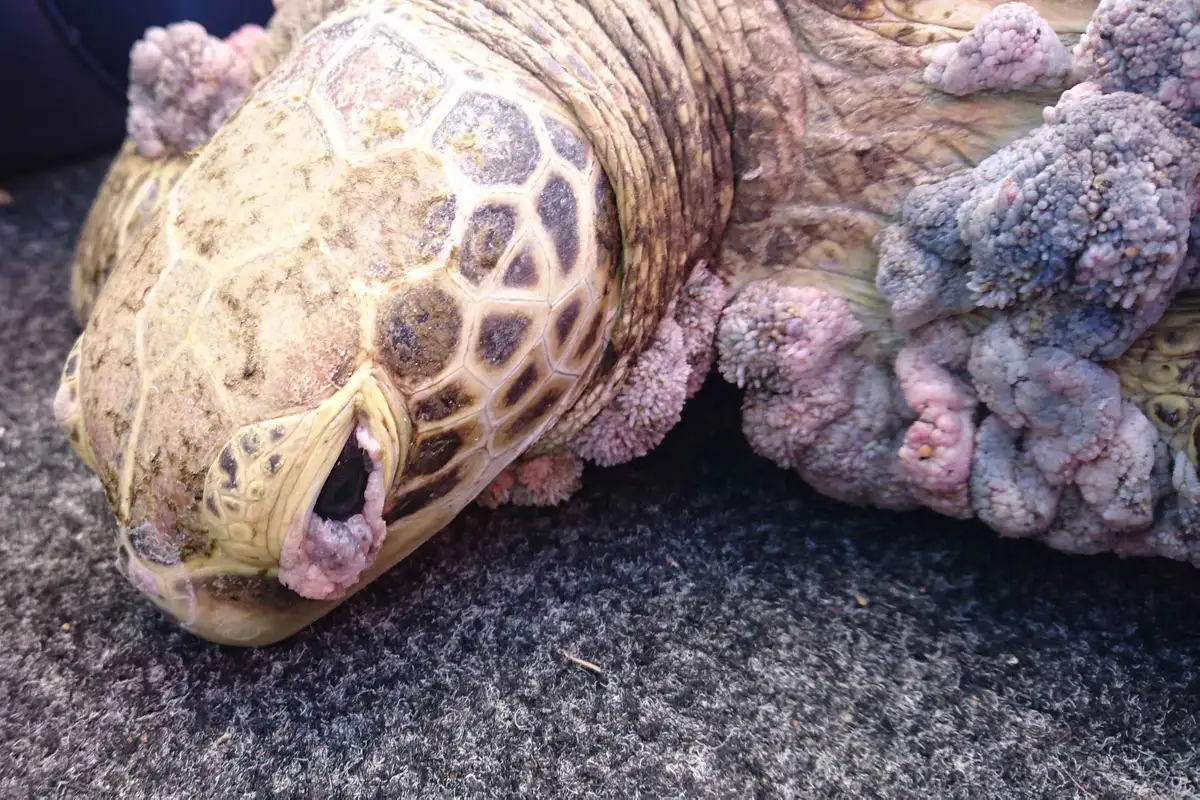
|
| TURTLE-SPECIFIC HERPESVIRUS CAUSES FIBROPAPILLOMATOSIS DISFIGURING TUMOURS |
| GREEN SEA TURTLE |
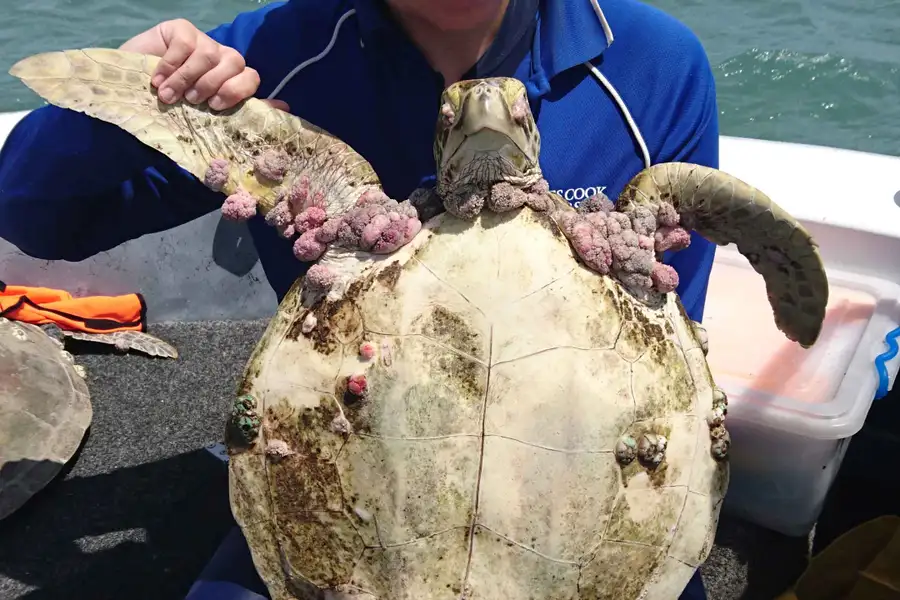
|
| CRIPPLING TUMOURS INCREASING, GREAT BARRIER REEF, AUSTRALIA |
| LOGGERHEAD SEA TURTLES ~ ADRIATIC SEA |
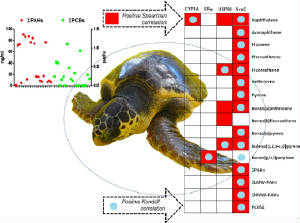
|
| Loggerhead Sea Turtles (Caretta Caretta) Adriatic Sea - PAHS and PCBS |
....................................................................................................................................................................................................................................................................................................................................................................................................................................................................................................................................
| PAHS - POTENT AGONISTS OF ATLANTIC COD |
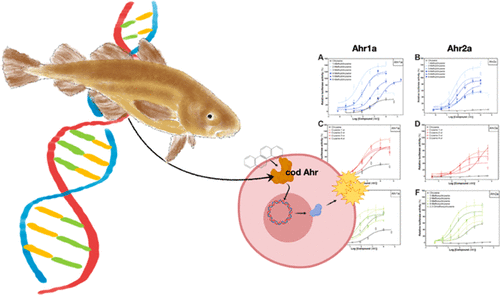
|
| Environmental Science & Technology - ACS 2021 |
| "TOXICITIES OF PAHS FOR AQUATIC ANIMALS" |
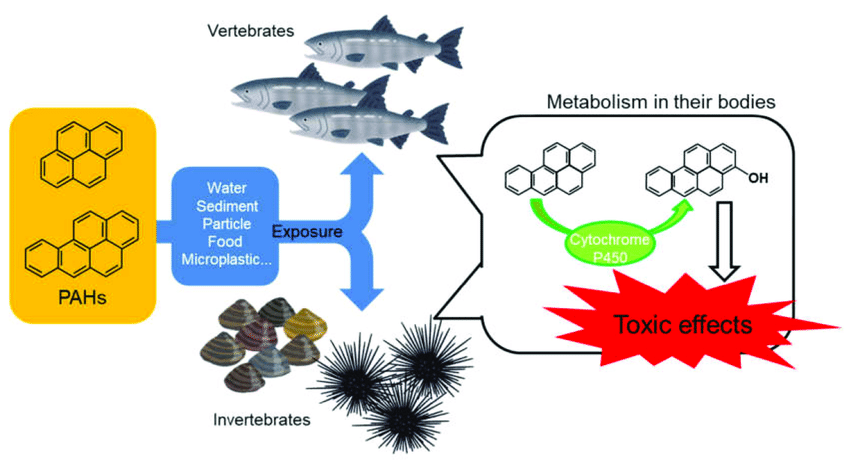
|
| General Environmental Fate and Toxic Mechanism Of PAHS In The Aquatic Ecoystem (2020) |
| SRI LANKA REPORT: PAHS |
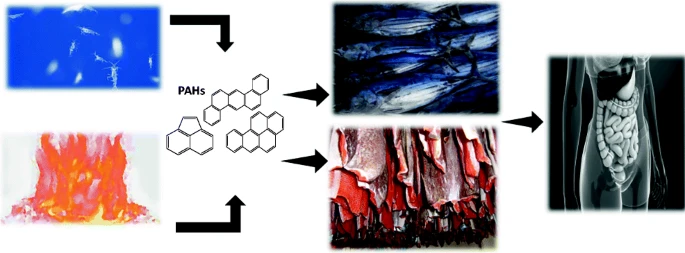
|
| DRIED, SMOKED FISH & OTHER PRODUCTS NO LONGER FOR HUMAN CONSUMPTION |
| EFFECTS ON FISH AND PRAWN IN PERSIAN GULF, IRAN |
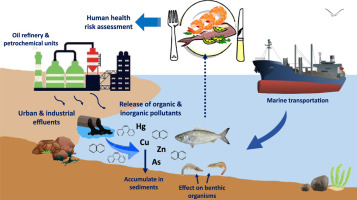
|
| POTENTIALLY TOXIC ELEMENTS (PTES) & POLYCYCLIC AROMATIC HYDROCARBON (PAHs) (2019) |
..................................................................................................................................................................................................................................................................................................................................................................................................................................................................................................................................
| SEA OTTER |
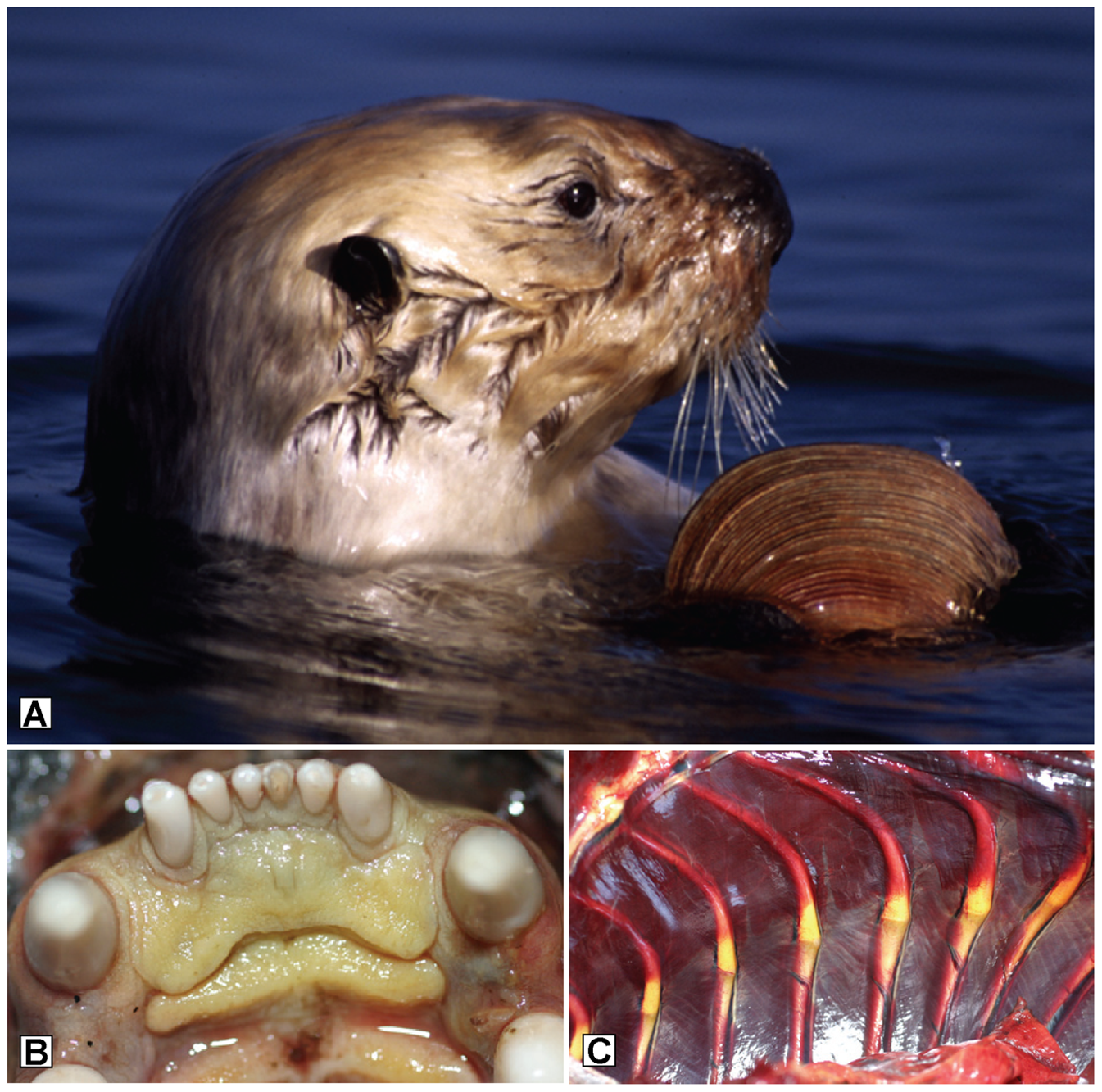
|
| ALGAL BLOOM::MICROCYSTIN INTOXICATION TISSUES- LINKED TO BIVALVES CONSUMPTION LIVER DAMAGE & ICTERUS |
| SEA OTTERS |
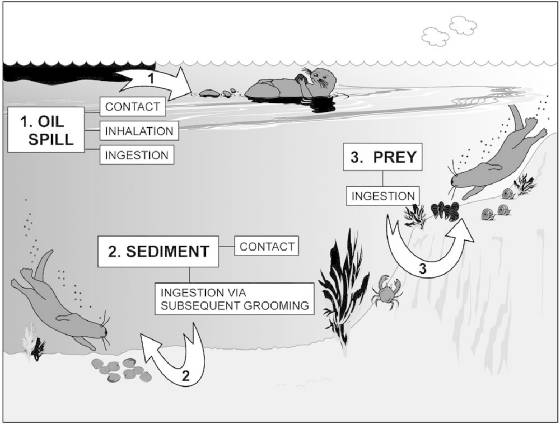
|
| PAHS - CONCENTRATIONS and PATTERNS BRITISH COLUMBIA, CANADA |
| ATLANTIC WALRUSES |
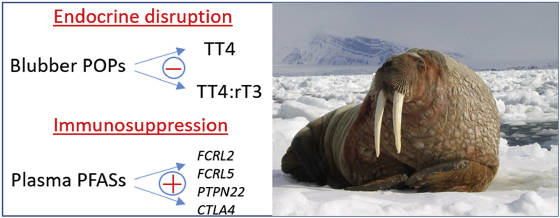
|
| CHANGES IN THYROID HORMONES & IMMUNE SYSTEMS |

|
| More links coming! |
..................................................................................................................................................................................................................................................................................................................................................................................................................................................................................................................................
"You've Heard of PFAS, but, What are PAHs?" - Professor Tom Ennis, Baylor University (2022)
"When a substance is released from a large area, such as an industrial plant, or from a container, such as a drum or bottle,
it enters the environment. This release does not always lead to exposure. You can be exposed to a substance only when you
come in contact with it. You may be exposed by breathing, eating, or drinking substances containing the substance or by skin
contact with it. ....
PAHs are a group of chemicals that are formed during the incomplete burning of coal, oil, gas, wood, garbage, or other
organic substances, such as tobacco and charbroiled meat. There are more than 100 different PAHs. PAHs generally occur as
complex mixtures (for example, as part of combustion products such as soot), not as single compounds. PAHs usually occur naturally,
but they can be manufactured as individual compounds for research purposes; however, not as the mixtures found in combustion
products. As pure chemicals, PAHs generally exist as colorless, white, or pale yellow-green solids. They can have . A few PAHs are used in medicines and to make dyes, plastics, and pesticides. Others are contained
in asphalt used in road construction. They can also be found in substances such as crude oil, coal, coal tar pitch, creosote,
and roofing tar. They are found throughout the environment in the air, water, and soil. They can occur
in the air, either attached to dust particles or as solids in soil or sediment."
POLYCYCLIC AROMATIC HYDROCARBONS (PAHS) FACT SHEET - United States Environmental Protection Agency (2008)
"PUBLIC HEALTH STATEMENT FOR POLYCYCLIC AROMATIC HYDROCARBONS (PAHs)" - Agency for Toxic Substances and Disease Registry (ATSDR),
Division of Toxicology and Human Health Sciences, U.S. Department of Health & Human Services
"Automobile Tires--a Potential Source of Highly Carcinogenic Dibenzopyrenes to the Environment" - Environmental Science and
Technology - NIH (2012)
"At the European level, limits have been set (REACH) for the content of polycyclic aromatic hydrocarbons (PAH) in products
with rubber and plastic components that come into contact with human skin or the oral cavity."
"EU Ban on Chemicals in Tyres: From 1st January 2010 Certain Chemicals Used in the Manufacture of Tyres are Banned Under Chemical
Legislation" - REACH - The Health and Safety Authority of Ireland
"Polycyclic Aromatic Hydrocarbons (PAHs) constitute a large group of chemically related substances many of which are known
carcinogens. To minimise human exposure there are already several pieces of European Union legislation which limit their
presence in certain food products, as well as in water and ambient air. Under the REACH regulation (EC 1907/2006 Annex
XVII, Entry 50), eight priority PAHs have for some time been restricted in extender oils used in tyres. Although not
added deliberately to consumer products, PAHs can still be present as impurities. An amendment of the above mentioned legislation
(Regulation EU 1272/2013) establishes content limits for the eight PAHs of 0.5 mg kg-1 for plastic and rubber components
of toys/childcare articles, and 1 mg kg-1 for all other consumer articles, in direct and prolonged, or short-term repetitive,
contact with the skin or oral cavity.
In May 2016 DG JRC and DG GROW signed an Administrative Arrangement (AA 34003) known as the STANPAHs project."
Ethylene Propylene Diene Terpolymer (EPDM)
"What is EPDM Rubber?" - Custom Rubber Corporation (2023)
"Outdoor playground surfaces can be made of natural soil or poured rubber installation, which largely consists of crumb rubber
(cushion layer), covered by materials (wear layer) such as ethylene propylene diene monomer (EPDM), styrene-butadiene
(SBR), or thermoplastic vulcanizate (TPV) granules. It has been reported that rubber tire materials contain aromatic extender
oil and have a PAH content of 300–700 mg kg−1 (Aatmeeyata and Sharma, 2010). Previous studies of PAH concentrations
in natural soil playgrounds in Bratislava, Slovakia (Hiller et al., 2015) and Gwangju, Republic of Korea (Islam et al., 2018)
indicated mean childhood cancer risks of 1.09 × 10−7 and 3.6 × 10−7, respectively. Contrastingly, Tarafdar et
al. (2019) reported that the cancer risk was marginally higher than the standards set by US Environmental Protection Agency
((EPA 1990)) in the dust from poured rubber-surfaced playgrounds in Seoul, Republic of Korea. PAHs concentrations were four
to five times higher in dust from the covered playground than in the natural soil playground (Tarafdar et al., 2019). Bioavailability
of the higher concentration of PAHs in dust in covered playgrounds is uncertain as the natural soil playgrounds. Higher total
PAH concentration in dust can be attributed to PAH migration from the rubber mulch of the poured rubber surface."
DOW Chemicals Boasts, "Sustainability"; "Life cycle analysis of EPDM produced with AMC technology shows that it has much lower
environmental impact than producing Ziegler-Natta EPDM,(1) including 20-25 percent less energy demand, overall improvement
across categories, 45 percent less smog, 69 percent less impact on ozone depletion, 55 percent less eutrophication, 39 percent
less CO2 emissions, and 37 percent less acidification."
FALSE - while perhaps better than another EPDM type, Dow boasts as if EPDM is a "new" product, but actually being used
for well over 70 years (1950's). EPDM contain Polycyclic Aromatic Hydrocarbons.
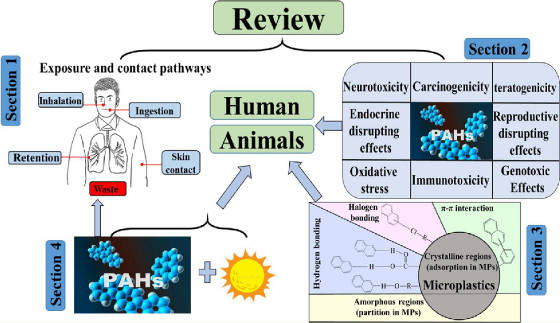
|
| SCIENCE OF THE TOTAL ENVIRONMENT [Click for large picture] |
"Is there a medical test to show whether I’ve been exposed to PAHs?
In the body, PAHs are changed into chemicals that can attach to substances within the body. There are special tests that can
detect PAHs attached to these substances in body tissues or blood. However, these tests cannot tell whether any health effects
will occur or find out the extent or source of your exposure to the PAHs. The tests aren’t usually available in your
doctor’s office because special equipment is needed to conduct them."
"Polycyclic Aromatic Hydrocarbons: From Metabolism to Lung Cancer" - Toxicological Sciences (2015)
COAL-TAR ~ ASPHALT
Astonishing Research Results. Links PAHS in the air we "breathe" - inhale. We eat PAHS dirt not just via food, but even
as simple as inhaling while yawning. Tire Particles and Tire Fragments are verified in this research, of 9 years ago,
laying claim that with further examination since, just as asphalt sealants, coal tar and others, so do tire manufacturers
use sealants to connect plastics, metals, and rubber in its many layered at least 2,000 chemical concoction we call, "rubber
tyres/tires."
- "PAHs/Coal Tar Sealants Effects on Environment & Human Health" - USGS (2014) [Video Presentation]
"Driveway Sealants, Children and Cancer Risk" - Dr. Williams Baylor University (2011)
"Driveway Sealants, Children and Cancer Risk" - Professor Tom Ennis, Baylor University (2012)
| PAHs CONTAMINATION & LEACH FROM DAIRY PRODUCTS |
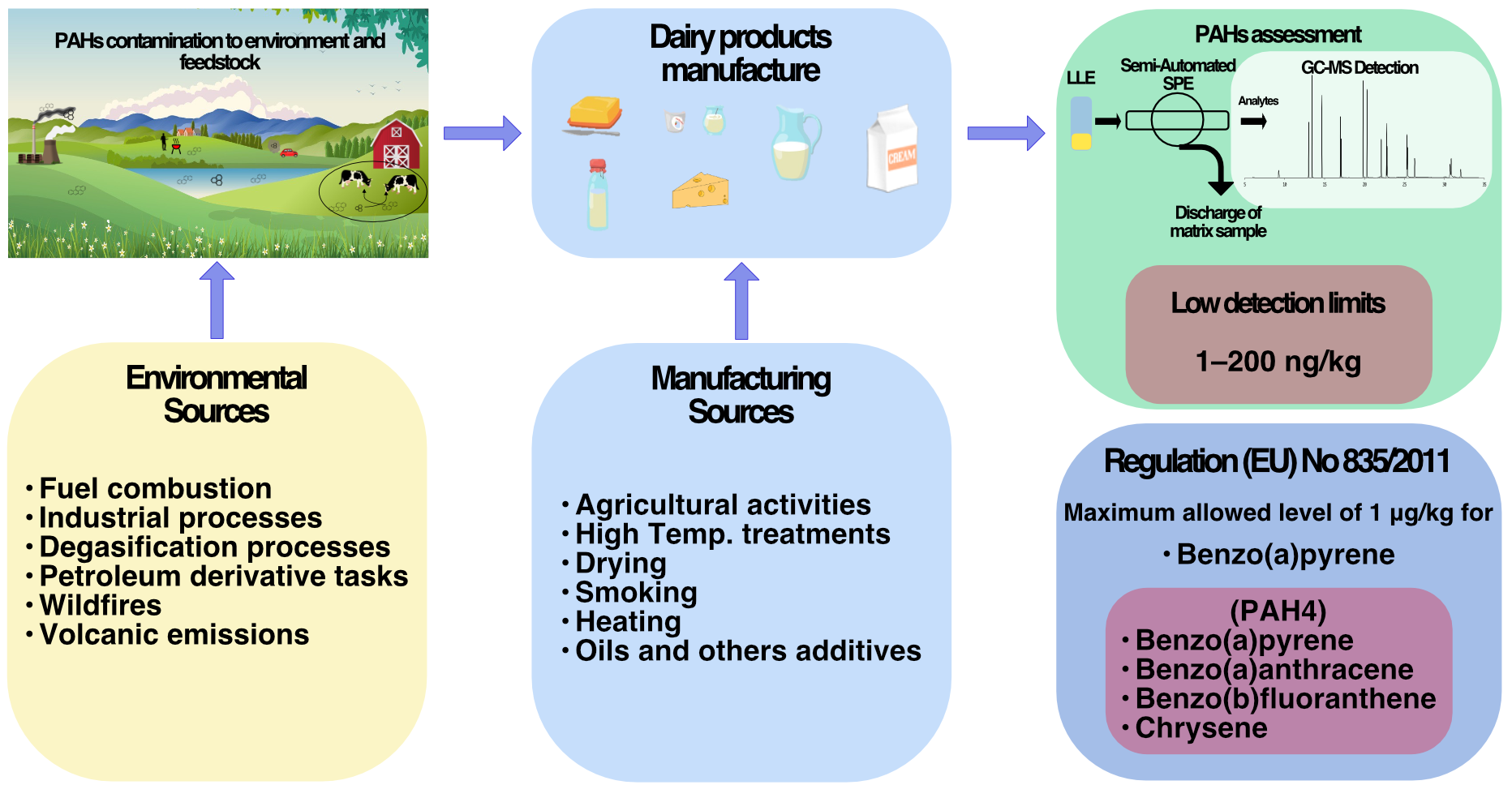
|
| PAHS - Contamination Dairy Manufacturing Graphical Abstract 2022 |
"Toothpaste, soap, face masks, food colouring, charcoal flour, water filters, diarrhea tablets: all these products contain
or consist of activated carbon or biochar, used mainly to sequester pollutants, or to blacken food or personal care
products. ....
When activated carbon products are used, PAHs can detach from the surface and enter the body via the skin, lungs and gastrointestinal
tract, where they exert their effects."
Immediate free access for article(s) through e-mail sign-up. No mention of coal-tar, PAHS chemicals, known carcinogens, being
in shampoos.
"The study found elevated levels of PAHs, phthalates and SVCOCs in toilet tissue papers on the Ghanaian market. These
levels suggested elevated cancer and non-cancer risk associated with the dermal use of the toilet tissue papers by
an adult Ghanaian for a life time of 70 years. The cumulative effect of the risk of exposure to carcinogenic SVOCs
in toilet tissue papers, may have contributed significantly to the upsurge in cancer incidence in Ghana and the world as
a whole. It is therefore, recommended that FDA and other regulatory bodies in Ghana increase surveillance
to help curb the menace in the toilet tissue paper production industries. This may help reduce the significant contributions
of these consumer products and their likes to the cancer incidences. The source apportionment conducted with PCA-MLR, revealed
two major possible sources, which indicated phthalates, PAHs and 2-chhloronaphthalene to have come from one common source,
possibly an oil base source whereas SVCOCs came from another source, possibly a bleaching source.
"In this US adult population, certain PAHs are significantly associated with higher body fat contents among non-Hispanic
Blacks and Hispanics but not non-Hispanic Whites, suggesting that minority groups might be particularly susceptible to
PAH’s obesogenic effects or the effects of other factors that determine the PAH exposure levels. Alternatively, differences
in body composition may contribute to differential PAH metabolism in minority groups. Future studies are warranted to explore
the racial/ethnic disparity in PAH exposures, drivers of these exposure differences, and mechanisms through which PAHs may
influence body composition by races/ethnicities."
Unfortunately, artist used yellow text. Please make screen big, stop and start to read text presentation.
MARYLAND: "The spreading of a ton of salt per mile of freeway whenever icing conditions exist is found to exacerbate this
problem. The hydrocarbon and lead residues associated with water rub-off have not even been evaluated."
"Distribution of PAHs in Coal Ashes From the Thermal Power Plant and Fluidized Bed Combustion System; Estimation of Environmental
Risk of Ash Disposal" - Environmental Pollution - Pub Med (2020)
"What is coal tar and coal-tar pitch?
Coal tar is a byproduct of the coking, liquefaction or gasification of coal. Coal-tar pitch is the residue that remains after
the distillation of coal tar, that is, the thick black liquid remaining after various oils are removed from coal tar for use
in the manufacture of industrial and consumer products. Coal-tar pitch is separated, or "refined", into 12 grades of viscosity.
The most viscous grade, RT-12, is used in coal-tar-based sealcoat. The primary use of coal-tar pitch is in electrode manufacturing
for the aluminum industry and for steel arc furnaces.
What are PAHs?
PAHs are a group of chemicals created by heating or burning material that contains carbon. There are many sources of PAHs
to the environment, representing a wide range of PAHs concentrations, including asphalt (2-9 milligrams per kilogram, or mg/kg),
tire particles (84 mg/kg), used motor oil (730 mg/kg), and coal-tar-based sealcoat (34,000-202,000 mg/kg). PAHs cause cancer,
mutations, birth defects, and/or death in fish, wildlife, and invertebrates. Several PAHs are photoactivated, meaning that
their toxic effects are greatly intensified when exposed to sunlight. The EPA has classified seven PAHs as probable human
carcinogens, and 16 PAHs as Priority Pollutants."
"PAH levels in the worker breathing zones were highest for naphthalene, acenaphthene, and phenanthrene, with geometric means
of 52.1, 11.4, and 9.8 μg/m3, respectively. Hand wipe levels of phenanthrene, fluoranthene and pyrene were the highest
among the 22 PAHs with geometric means of 7.9, 7.7, and 5.5 μg/cm2, respectively. Urinary PAH biomarkers for naphthalene,
fluorene, phenanthrene, and pyrene were detected in all workers and were higher for post-shift samples than those collected
pre-shift. .... all nine PAHs classified as possible human carcinogens (Group 2B) or known human carcinogens (Group 1) were
detected in post-shift hand wipes. .... The exposure results from RCTS worker samples cannot be explained by proximal factors
such as nearby restaurants or construction. Air and skin concentration levels were substantially higher for RCTS workers than
previously published levels among asphalt workers for all PAHs. .... These results indicate the need to increase safety controls
and exposure mitigation for RCTS workers.
"Genotoxic Effect of Exposure to Polycyclic Aromatic Hydrocarbons (PAHs) in Asphalt Workers" - Excli Journal, NIH (2021)
"Parent and Alkylated Polycyclic Aromatic Hydrocarbons (PAHs) and Per- and Polyfluoroalkyl Substances (PFAS) in North San
Francisco Bay, Napa River, and Sonoma Creek in 2018 and 2019 - USGS (2021)
"Tire Particle Pollution in Charleston Harbor" - Environmental Toxicologist, Dr. John Weinstein - The Citadel (2018)
"Polycyclic aromatic hydrocarbons (PAHs) are a class of widespread environmental carcinogens. Most of our knowledge
of their mechanisms of metabolic activation to DNA-binding 'ultimate carcinogenic' metabolites has come from analysis
of the DNA interaction products formed by these highly reactive intermediates. Studies of their role in forming DNA-binding
intermediates identical to those formed in vivo from the PAH itself have also allowed identification of the particular cytochrome
P450 enzymes involved in activating various structural classes of carcinogenic PAHs. It has been established that PAHs, after
metabolic activation in vivo, are capable of inducing mutations in oncogenes and, by inducing multiple mutations, may result
in tumors. PAHs also cause changes in cellular gap-junction communication similar to those caused by the tumor promoter
12-O-tetradecanoylphorbol-13-acetate."
SEALERS: "Sealers are thinned varnish, shellac or lacquer and are used to prevent absorption of surface coatings and also
to prevent the bleeding of some stains and fillers into surface coatings, especially lacquer coatings. - Encyclopedia of Forest
Sciences (2004)
TRICLOCARBAN (TCC) Uses: Antimicrobial and antifungal compound (from 1960's). Commonly found in soaps, lotions, deodorants,
toothpastes, and plastics. - Analysis of Cosmetic Products (Second Edition) (2018)
"Active ingredients for the control of dandruff. (1) coal tar , 0.5 to 5 percent. When a coal tar solution, derivative, or
fraction is used as the source of the coal tar , the labeling shall specify the identity and concentration of the coal
tar source used and the concentration of the coal tar present in the final product."
"Federal Food, Drug, and Cosmetic Act of 1938. In the 1920s and 1930s, it became clear that the Food and Drugs Act of 1906
did not go far enough to protect the public health from misbranded, adulterated, and even toxic products, including an eyelash
dye that blinded some women. The Federal Food, Drug, and Cosmetic Act of 1938 further increased government oversight of
food and drugs and, for the first time, passed legislation for the regulation of cosmetics and medical devices.
For color additives, the 1938 FD&C Act mandated the listing of those coal-tar colors (other than coal-tar hair dyes) that
were "harmless and suitable" for use in foods, drugs, and cosmetics. In addition, the act: contained adulteration and misbranding
provisions for the use of coal-tar colors in foods, drugs, and cosmetics; required the listing of new colors; and made mandatory
the previously voluntary certification program for batches of listed colors, with associated fees."
"The principal display panel of the label and any labeling accompanying a coal tar hair dye containing any ingredient listed
in paragraph (b) of this section shall bear, in accordance with the requirements of § 740.2, the following":
"Warning - Contains an ingredient that can penetrate your skin and has been determined to cause cancer in laboratory
animals."
Polycyclic Aromatic Hydrocarbons are naturally found in petroleum. Roof tiles, as well as amongst all other products, cancer-producing
carcinogens lurk, and expend.
IN THE UNITED STATES - WITH EVERY TIRE REVOLUTION - YOU MAKE PAHS! WHILE DRIVING, YOU PROCEED TO MAKE PAHS FOR EVERYONE NOT
IN A VEHICLE TO BREATH IN PAHS - AND INGEST!!!!
SEEK: TIRES TYRES EVERYWHERE
POLYCYCLIC AROMATIC HYDROCARBONS FOUND IN TOXIC ALGAL BLOOMS ⇶ LEACHING AND DEVELOPING CANCEROUS TUMORS ESPECIALLY FOR
WATERLIFE
"Oil Spills and Harmful Algal Blooms: Disasters with Shared Consequences for Communities" - National Oceanic and Atmospheric
Administration (2020)
ALGAE BLOOMS: "To our knowledge, this is the first study employing SIP with a U-13C-labeled PAH to identify the
PAH-degrading bacterial community in a marine water sample. We identified a novel PAH-degrading clade which was found
associated with a toxic algal bloom in Tampa Bay, Florida. These organisms, which have low taxonomic affiliation to any
characterized strain, represent unclassified members of the family Rhodobacteraceae. Considering that the majority
of microorganisms in our biosphere are resistant to cultivation, this work highlights the importance of pursuing cultivation-independent
methods to reveal further information on PAH-degrading microorganisms, particularly in ocean environments for which
SIP experiments employing hydrocarbon substrates have been scarcely employed."
MEASURED PAHS AIR POLLUTION: "Further, low concentrations of compounds with a high TEF, such as 7,12-DMBaA, would have a disproportionate
contribution to the toxicity of ambient air. Our study emphasizes that excluding alk-PAHs would significantly underestimate
the toxicity of air mixtures, specifically in an urban environment where exposure is higher. Further, from a regulatory perspective,
both the ambient concentration and toxic potential should be considered to justify their inclusion in routine measurements
and human health risk assessments."
"Pyrogenic Carbonaceous Materials (PCM) are increasingly used in a wide variety of consumer products, ranging
from medicine, personal care products, food and feed additives, as well as drinking water purification.
Depending on the product category and corresponding legislation, several terms are commonly used for PCM, such as Carbo
activatus, C. medicinalis, vegetable carbon (E153), (activated) charcoal, (activated) biochar, or activated carbon. All
PCM contain polycyclic aromatic hydrocarbons (PAHs) co-produced during pyrolysis."
⇶
IN FOOD

|
| POLYCYCLIC AROMATIC HYDROCARBON (PAHs) (2022) |
"NONE BUT THE BRAVE COULD EAT THE FARE"
U.S.A. - European Study Partnership: "Polycyclic aromatic hydrocarbons (PAHs) have been classified as priority pollutants
by the U.S. Environmental Protection Agency (EPA) and the European Commission on the grounds of their carcinogenic, mutagenic,
and teratogenic properties. Because of their ubiquity in industrial processes and the environment, PAHs can reach
milk and dairy products and, eventually, humans. In this work, a new method was developed to detect and quantify sixteen
of the EPA’s priority PAHs in commercial milk and dairy products."
"18655. Misbranding of Dr. Warner's White Wine and Tar Syrup Compound. U. S. v. 5 3/4 Dozen Small-Sized Bottles, et al., of
Dr. Warner's White Wine Tar Syrup Compound. Default Decree of Condemnation and Destruction." - National Library of Science
- FDA - NIH
More Soon
"Polycyclic Aromatic Hydrocarbons And Coal Tar Sealants" - Sweet Water & MMSD. Partners for a Cleaner Environment [Milwaukee
Fact Sheet] (2016)
IN DEPTH
"Influence of Climate Change on Persistent Organic Pollutants and Chemicals of Emerging Concern in the Arctic: State of Knowledge
and Recommendations for Future Research" - Journal of the Royal Society of Chemistry (2022)
"Fate of Polycyclic Aromatic Hydrocarbons in Seawater from the Western Pacific to the Southern Ocean (17.5°N to 69.2°S) and
Their Inventories on the Antarctic Shelf" - Environmental Science and Technology American Chemical Society (2016)
"31.07 Polycyclic Aromatic Hydrocarbons and Annulenes" - Michael Evans, Chemist

|
| More links coming! |
"Polycyclic Aromatic Hydrocarbons (PAHs) are among the most toxic and bioavailable components found in petroleum
and represent a high risk to aquatic organisms."
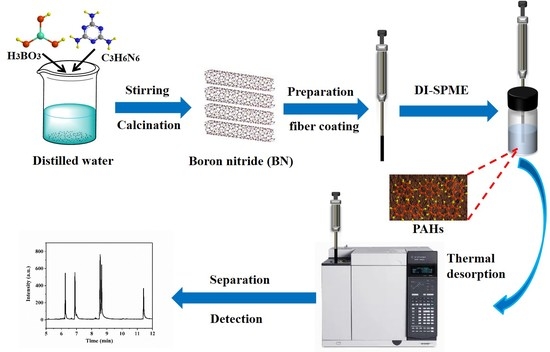
|
| NANAOMATERIALS ~ PAHS - SEPARATION-DETECTION PROCESS |
"Sample pretreatment plays important role in the analysis and detection of trace pollutants in complex matrices, such
as environmental and biological samples. The adsorption materials of sample pretreatment receive considerable attention, which
has a significant effect on the sensitivity and selectivity of the analytical method. In this work, the porous hexagonal boron
nitride (h-BN) was utilized as a coating material of solid-phase microextraction (SPME) to extract and preconcentrate polycyclic
aromatic hydrocarbons (PAHs) prior to separation and detection with GC-FID. Attributed to the multiple interactions including
hydrophobicity, hydrogen bonding and strong π–π interaction, the h-BN coating showed excellent
extraction performance for PAHs."
ARTIFICIAL GRASS KILLS NOT BY BLADE, BUT BY SOD
ARTIFICIAL GRASS TURFS: PAHS found, while PCPS and others higher
"Do not require the use of rubber infill" does not mean that tire crumble, or chemicals associated with the makeup
of tires types of PAHS and PHAS family chemicals are not used.
PAHS CAUSE BREAST CANCER: "Polycyclic Aromatic Hydrocarbons (PAHs)" - Breast Cancer Prevention Partners
IN YOU
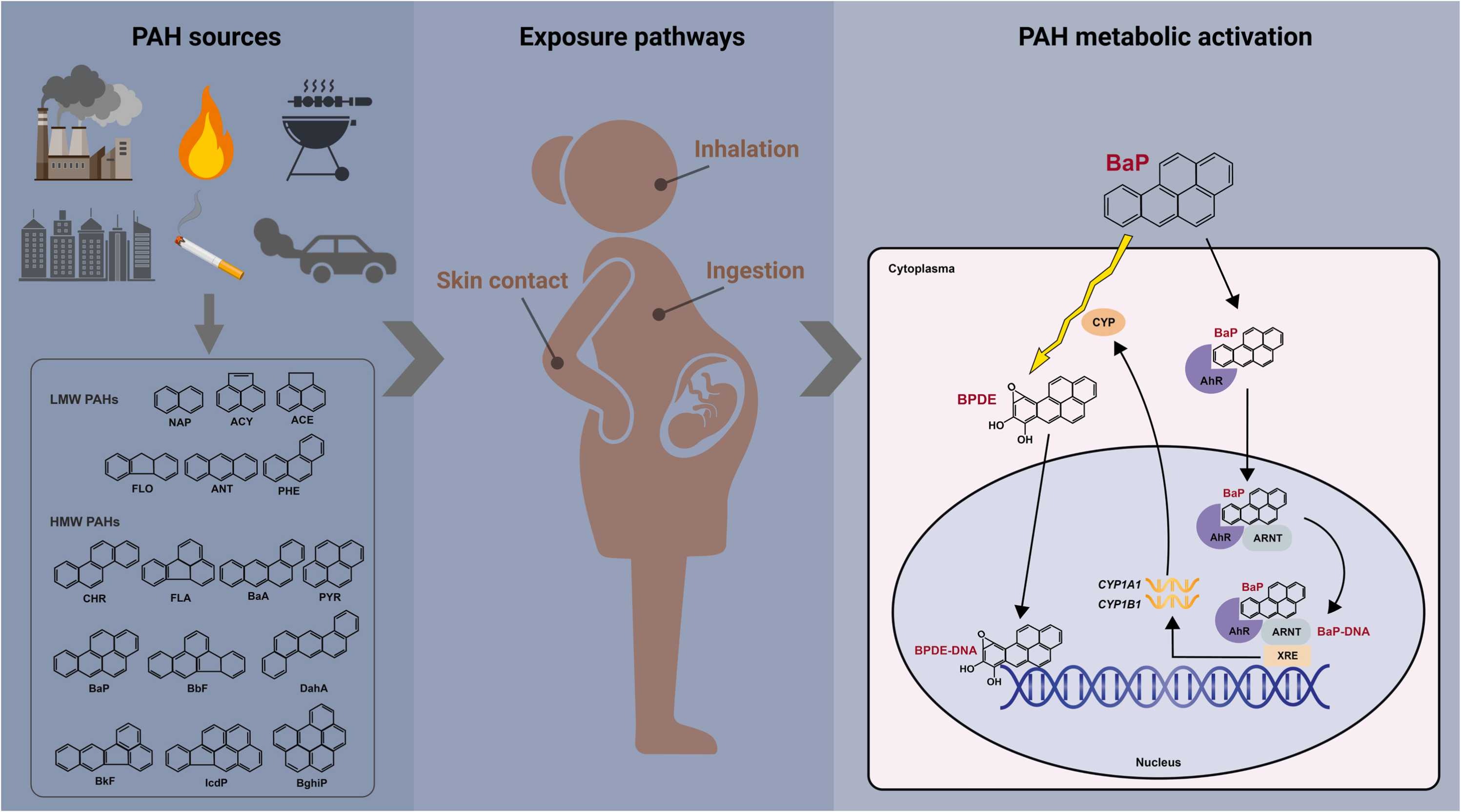
|
| PAHS FOUND INSIDE FEMALE & FETUSES |
"PAHs can be found in maternal and fetal blood and in the placenta during pregnancy. They may thus affect
placental and fetal development."
~
"MICROPLASTICS AND TOXIC CHEMICALS" IN DEPTH:
1. Heavy Metals: Cr (44–430 μg/g) > Ni (40–131 μg/g) > Fe (41–97.8 μg/g) > Co
(17.7–107 μg/g) > Cd (1.09–76.7 μg/g) > Al (16.9–55.8 μg/g) > Zn
(0.299–23.3 μg/g) > Mn (1.16–20.5 μg/g) > Cu (0.064–1.32 μg/g),
2. Organic Pollutant
3. Polychlorinated biphenyl’s (PCB’s)
4. Polyaromatic hydrocarbon (PAHs)
5. Organochlorine Pesticides (OCPs)
6. Dichlorodiphenyltrichloroethane and related compounds (DDTs)
7. Hexachlorocyclohexane (HCH) isomers| Hexachlorocyclohexanes (HCHs)
8. Chlordane, cyclodienes, mirex, hexachlorobenzene and hopanes
9. Other organic pollutants
10. Polybrominated diphenyl ethers (PBDEs)
11. Perfluorinated Compounds (PFCs) - also called Perfluorinated Alkyl Substances (PFASs)
THE FAMILY: POLYCYCLIC AROMATIC HYDROCARBON EMISSIONS
More coming soon. Please seek link below.
GREENHOUSE GAS EMISSIONS
European Polycyclic Aromatic Hydrocarbons Emission Totals (2021):
DUE TO E.U. PAHS BAN:
"Majority of individual countries report that PAH emissions have decreased since 1990, five countries, Bulgaria, Denmark,
Finland, Malta and Romania have reported an increase in PAH emissions. One cause of these increased emissions is
the introduction of policy measures that have encouraged the burning of renewable materials (e.g. wood by Danish households).
Wood burning produces emissions of PAHs and hence, in this instance, policies that have been implemented to address
one environmental issue (climate change) have had unintended consequences on another (air pollution). In absolute terms, the
emissions of PAHs from these countries are relatively low compared with other countries, but the effect on local populations
and environmental quality may, nevertheless, be notable. Of the EEA-33 countries, Portugal and Germany reported the highest
PAH emissions."
DOUBLE DESTRUCTION: PFAS & PAHS IN MICROPLASTICS
"Plastic is an organic polymer synthesized from fossil feedstocks such as natural gas, oil or coal. In modern times, the first
plastic manufactured was in 1907 called, 'Bakelite'. Due to the many benefits of plastics such as cheap, versatile, lightweight
and resistant, its worldwide production which was only 0.35 million metric ton in 1950 has increased nearly 200-fold, reaching
348 million metric tons in 2017, with average annual growth of 9%. In 2017 alone, about 34.8 million metric tons of plastics
ended up in the marine environment. Overall, approximately 80% of the plastics polluting the marine environment come from
land-based sources. ....
Behaviour of microplastics interacting with toxic chemicals can be problematic for the environment because adverse effects
of these toxic chemicals have been associated with mutagenic, teratogenic and carcinogenic effects. Examples of toxic chemicals
that have been reported include heavy metals such as iron (Fe), manganese (Mn), aluminum (Al), lead (Pb), copper (Cu), silver
(Ag), zinc (Zn) and hydrophobic organic contaminants (HOCs) also referred to as persistent organic pollutants (POPs) such
as polycyclic aromatic hydrocarbons (PAHs), organochlorine pesticides (OCPs) and polychlorinated biphenyls (PCBs)."
"MICROPLASTICS AND TOXIC CHEMICALS" IN DEPTH FAMILIES:
1. Heavy Metals: Cr (44–430 μg/g) > Ni (40–131 μg/g) > Fe (41–97.8 μg/g) > Co
(17.7–107 μg/g) > Cd (1.09–76.7 μg/g) > Al (16.9–55.8 μg/g) > Zn
(0.299–23.3 μg/g) > Mn (1.16–20.5 μg/g) > Cu (0.064–1.32 μg/g),
2. Organic Pollutant
3. Polychlorinated biphenyl’s (PCB’s)
4. Polyaromatic hydrocarbon (PAHs)
5. Organochlorine Pesticides (OCPs)
6. Dichlorodiphenyltrichloroethane and related compounds (DDTs)
7. Hexachlorocyclohexane (HCH) isomers| Hexachlorocyclohexanes (HCHs)
8. Chlordane, cyclodienes, mirex, hexachlorobenzene and hopanes
9. Other organic pollutants
10. Polybrominated diphenyl ethers (PBDEs)
11. Perfluorinated Compounds (PFCs) - also called Perfluorinated Alkyl Substances (PFASs) [PVC]
12. Bisphenol A (BPA)
13. Aliphatic hydrocarbons
14. Octylphenols (OPs) and Nonylphenols (NPs)
"A recent study found PFAS in all fish tested in both the Rouge and Huron rivers. PER AND POLYFLUOROALKYL SUBSTANCES
(PFAS), MICROPLASTICS, POLYCYCLIC AROMATIC HYDROCARBONS (PAHS) 1,4-DIOXANE
BUT THE'RE COUSINS: VINYL CHLORIDE
"Vinyl chloride is a colorless gas that burns easily. It does not occur naturally and must be produced industrially for its
commercial uses. Vinyl chloride is used primarily to make polyvinyl chloride (PVC), a hard plastic resin used to make a variety
of plastic products, including pipes, wire and cable coatings, and packaging materials. ....
Vinyl chloride exposure is associated with an increased risk of a rare form of liver cancer (hepatic angiosarcoma), as well
as primary liver cancer (hepatocellular carcinoma), brain and lung cancers, lymphoma, and leukemia."
| VINYL CHLORIDE |
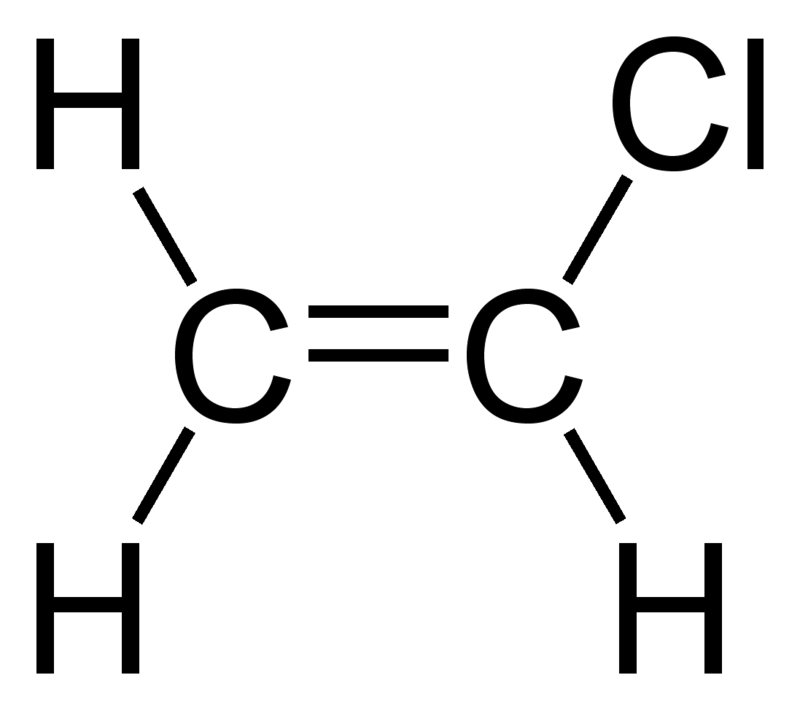
|
| VINYL CHLORIDE |
"What are Vinyl Chloride and Isobutylene? More About the Chemicals Released in Ohio Train Derailment" - The Columbus Dispatch
(2023)
VINYL CHLORIDE: "What is vinyl chloride?" - National Cancer Institute
"EPA Lists Additional Chemicals Released in East Palestine Train Derailment" - The Allegheny Front, State Impact Pennsylvania
(2023)
"Our beautiful valley is polluted by petrochemical waste, our communities are polluted by poverty, and our friends and
neighbors are polluted by pharmaceutical companies making money off selling us drugs and prison profiteers making money off
locking us up."
Where East Palestine is.... already toxic chemicals....
"The EPA should strongly discourage the use of single-use plastic water bottles during the lead service line replacements,
as single-use plastic water bottles have significant environmental impacts over their lifecycle. Many single-use plastic water
bottles are made from polyethylene terephthalate (PET), which a scientific review article found 'may yield endocrine disruptors
under conditions of common use, particularly with prolonged storage and elevated temperature.' Plastic production
also harms frontline communities, and the majority of plastic waste ends up polluting our air, soil, and water.
Furthermore, a recent EPA memo makes clear that pursuant to the Safe Drinking Water Act, single-use plastic water bottles
are not eligible for State Revolving Funds (SRF). Both pitchers and filters are eligible for this funding. That is a very
wise policy and we applaud the EPA for adopting it.
"National Pipe and Plastics, which manufactured polyvinyl chloride (PVC) pipe from inert PVC resin. ... Facility operations
contaminated soils and groundwater with volatile organic compounds (VOCs)." [The Robintech Inc./National Pipe Company:
Vestal, New York. The 12-acre site is an inactive manuf Robinson Technical Products ----> Robintech Incorported ---->
Buffton Corporation ----> BFX Hospitality, Incorporated ("today" in regards to this EPA Report)]
Robintech, Incorporated / National Pipe Company Town of Vestal, New York
"Current provisions of the Safe Drinking Water Act do not require monitoring for heavy metals beyond the point of entry to
the distribution system, and additional research would be required to assess the degree of metals accumulation within the
distribution system. Vinyl chloride can leach from pre-1977 PVC pipe. No instances of MCL violations were cited in
association with post 1977 PVC pipe. Volatile organics present in the ground water or vadose zone can permeate plastic piping
and gaskets. Permeation is typically most severe for small diameter, low-flow pipes. The literature cites instances where
MCL violations have occurred at the point of consumption, although current provisions of the Safe Drinking Water Act do not
require monitoring for volatile organic compounds beyond the point of entry to the distribution system. In most instances,
the risk threshold of chemical contaminants is substantially lower than either the taste or odor thresholds, suggesting that
utilities cannot rely confidently on customers’ perception of taste and odor for identifying contamination events."
"Microplastic Presence in Dog and Human Testis and its Potential Association with Sperm Count and Weights of Testis and Epididymis"
- Toxicological Sciences (May 15, 2024)
PVC "Mo's Crib" - "Meet 8 Young Founders Turning Trash Into Cash" | World Wide Waste | Insider Business (2022)
.............................................................................................................................................................................................................................................................................................................................................................................................................................................................................................................................
|
